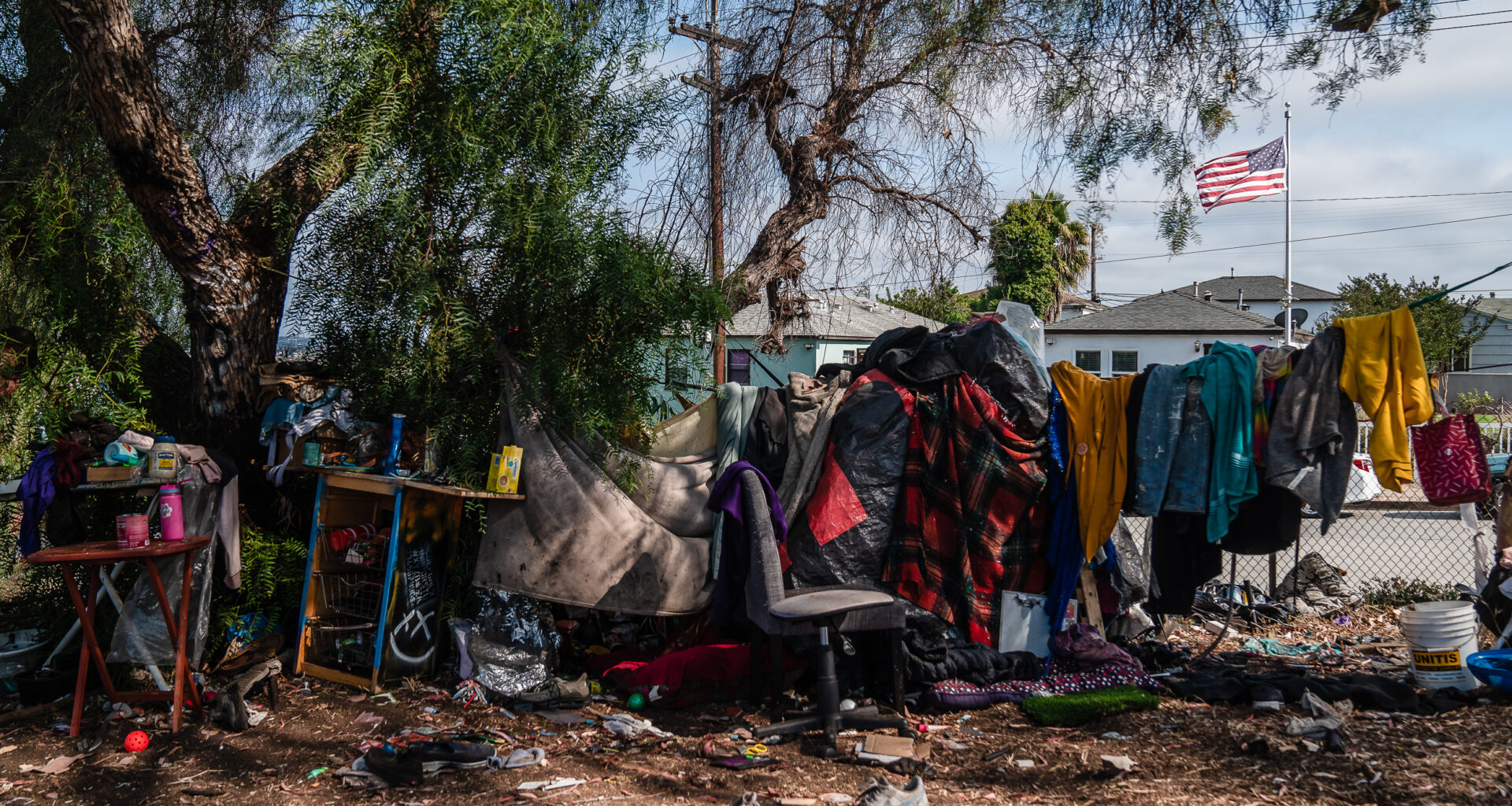Sedona Lineback is a student at La Jolla Country Day School.
The homelessness crisis in San Diego is an urgent and visible issue that affects everyone.
Though county and city leaders have put several programs into place, homelessness remains a pressing issue.
Voice of San Diego hosted a session on what to do about street homelessness at Politifest 2025: Solutions Showdown on Oct. 4, 2025. Three speakers presented specific solutions. Here’s what they had to say.
More Housing and Understanding
Dr. Margot Kushel, a UC San Francisco professor of medicine who led a groundbreaking survey of homelessness in California, said that the solution to homelessness is housing.
Kushel focused her solution pitch on people experiencing homelessness in encampments and prioritizing those who are vulnerable and dealing with serious health issues.
She cited a project in Berkeley where the city moved a group of people living in their cars to a shelter where they didn’t have to share space with others, also known as a non-congregate shelter.
Some of those individuals felt tied to the street because of their cars. They feared their cars would be taken or stolen if they left. The city offered to buy people’s vehicles if they consented to living in the shelter. Almost all agreed.
Kushel recognized that underlying issues, like people’s ties to the street, possessions, or attachment to their lifestyle, need to be addressed first. She said that the city needs to take measures, like buying back cars and keeping families together, to help those experiencing homelessness find shelter.
If officials don’t understand the reasons they refuse shelter or what led to them becoming homeless, it will be hard to help them get housing. Kushel’s argument was that the city needs to remove a person’s ties to the street before it moves them into a house.
San Diego Needs Sunbreak Ranch
The second speaker was retired Marine Colonel Patrick “Paddy” Gough of Sunbreak Ranch, a proposed homelessness triage center that could act as a go-between for people experiencing homelessness. He advocated for the eventual expansion of Sunbreak Ranch and triage centers like it.
Gough said medical professionals at these triage facilities could provide the immediate, lifesaving help needed and diagnose any immediate issues. Then they could provide direction and next steps. Gough argued that a safe transitional place is necessary, so those who are in danger can access the immediate help they need before they move somewhere more stable and permanent that could take longer to access.
Gough emphasized that rehabilitation requires protection, empowerment and the knowledge necessary to start a new life. He said that the federal government should declare a state of emergency, both to recognize this problem and to provide more funding to address it.
San Diego Needs More Permanent Supportive Housing
The winner of this Solutions Showdown was Iain De Jong, an author and CEO of OrgCode Consulting, which works in communities including San Diego.
He began his argument with a strong statement that resonated with many, perhaps all, in the room: “Everybody we work with needs somewhere to live, something to do with someone to love.”
He stated that the solution already exists: permanent supportive housing. Now, the city just needs to bring this option up to scale. These are permanent homes paired with services that help people experiencing homelessness stabilize.
De Jong said that the transition to housing is the most important thing in the recovery process. Being part of a community is as necessary a part of healing as immediate medical care. He argued triage facilities often lack the crucial element of the sense of each patient’s unique humanity.
He estimates that to kickstart solving this issue, the city needs to supply 2,500 permanent supportive housing units in the next five years through acquisition, rehabilitation and construction. Housing helps with recovery from mental illness, physical health issues, legal issues, and addiction.
Though the housing will be expensive, with an estimated building cost of $305 million and $6 million operating expenses thereafter for every 500 new units, De Jong argued this will actually be a decrease in yearly costs, due to the cost of city public health and safety responses to emergencies involving people experiencing homelessness. He suggests funding this infrastructure with taxes and social impact bonds, which are public-private partnerships that allow investors to help pay for projects.
De Jong emphasized that this new housing doesn’t even have to be new. The housing could be in former hotels or motels, or even in single homes where formerly people experiencing homelessness live together as roommates. “If we invest in housing, we invest in community, safety, and security,” De Jong said.
